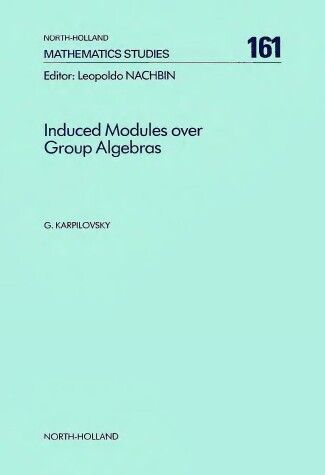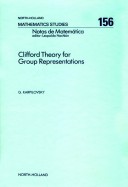North-Holland Mathematics Studies
3 total works
Vol 182
This volume is divided into three parts. Part I provides the foundations of the theory of modular representations. Special attention is drawn to the Brauer-Swan theory and the theory of Brauer characters. A detailed investigation of quadratic, symplectic and symmetric modules is also provided. Part II is devoted entirely to the Green theory: vertices and sources, the Green correspondence, the Green ring, etc. In Part III, permutation modules are investigated with an emphasis on the study of rho-permutation modules and Burnside rings. The material is developed with sufficient attention to detail so that it can easily be read by the novice, although its chief appeal will be to specialists.
In 1898 Frobenius discovered a construction which, in present terminology, associates with every module of a subgroup the induced module of a group. This construction proved to be of fundamental importance and is one of the basic tools in the entire theory of group representations. This monograph is designed for research mathematicians and advanced graduate students and gives a picture of the general theory of induced modules as it exists at present. Much of the material has until now been available only in research articles. The approach is not intended to be encyclopedic, rather each topic is considered in sufficient depth that the reader may obtain a clear idea of the major results in the area. After establishing algebraic preliminaries, the general facts about induced modules are provided, as well as some of their formal properties, annihilators and applications. The remaining chapters include detailed information on the process of induction from normal subgroups, projective summands of induced modules, some basic results of the Green theory with refinements and extensions, simple induction and restriction pairs and permutation modules.
Let N be a normal subgroup of a finite group G and let F be a field. An important method for constructing irreducible FG-modules consists of the application (perhaps repeated) of three basic operations: (i) restriction to FN. (ii) extension from FN. (iii) induction from FN. This is the `Clifford Theory' developed by Clifford in 1937. In the past twenty years, the theory has enjoyed a period of vigorous development. The foundations have been strengthened and reorganized from new points of view, especially from the viewpoint of graded rings and crossed products. The purpose of this monograph is to tie together various threads of the development in order to give a comprehensive picture of the current state of the subject. It is assumed that the reader has had the equivalent of a standard first-year graduate algebra course, i.e. familiarity with basic ring-theoretic, number-theoretic and group-theoretic concepts, and an understanding of elementary properties of modules, tensor products and fields.


